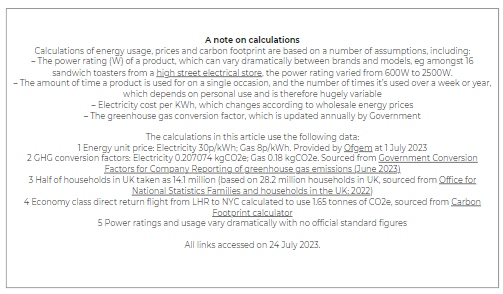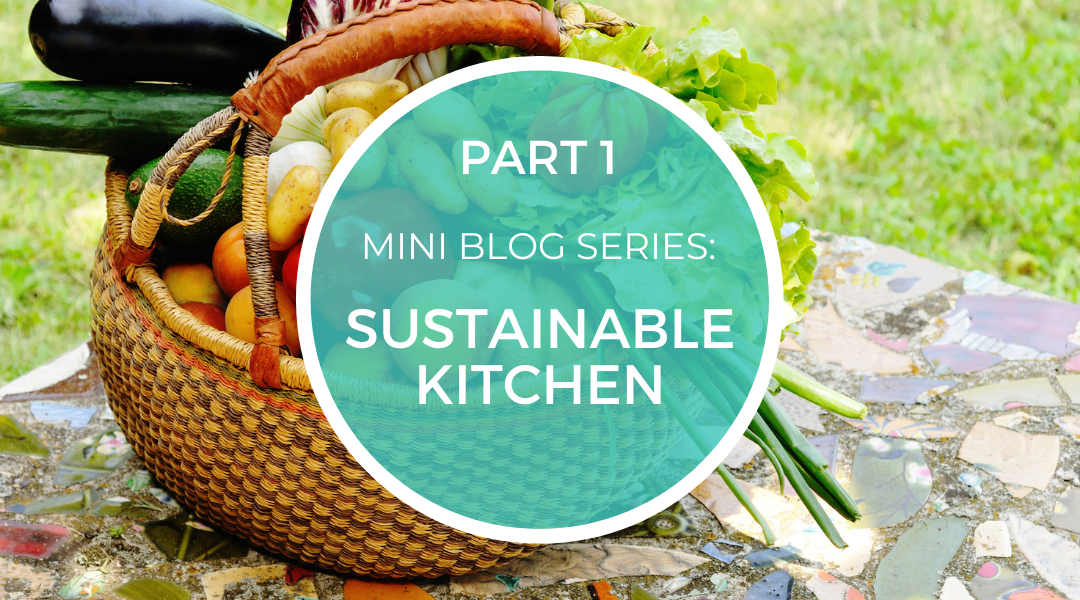A Sustainable Kitchen

By Juliette Kellow, Registered Dietitian
Sustainable September, a campaign from The Association of UK Dietitians (BDA), helps the nation shop, cook and eat more sustainably. In this 5 part mini blog series, Registered Dietitian Juliette Kellow reveals how encouraging clients to make small changes to their habits in the kitchen will benefit their bodies, bank balances and the planet…
Switching to a plant-based diet comes with health, environmental and financial benefits. The BDA’s One Blue Dot Report reveals a massive 17.9 million years of healthy life could be added to the UK population – an average of five months per person – if everyone’s diet matched The Eatwell Guide, which consists of around 80% plants. There are impressive environmental savings, too. An analysis by the Carbon Trust reveals moving from the current UK diet to one that meets The Eatwell Guide recommendations would result in a 31% reduction in greenhouse gas (GHG) emissions, a 34% reduction in land use and a 17% saving in water use. Budgets would also benefit. Research from Oxford University published in The Lancet Planetary Health found in high-income countries, vegan, vegetarian and flexitarian diets were the most affordable, with food costs reduced by 34%, 27% and 14%, respectively, when compared with current diets.
It’s clear that readdressing the balance of plant and animal foods in our diet is vital, but it’s just one step on the path towards creating a healthier planet. Our kitchen habits also have an environmental impact – and it’s not just cooking that affects this. A sustainable kitchen begins before food even enters the home and continues right through to ‘bin night’.
Prepare to plan
Working out a weekly menu is the first step towards a more sustainable kitchen. Studies show meal planning, writing shopping lists and checking fridge and food cupboard supplies before heading to the supermarket support a more sustainable diet by helping consumers buy what they need and avoid unnecessary purchases, thereby reducing food waste. For example, one study found writing a shopping list reduced food waste by up to a quarter.
Keep your cool
Chilled foods generally have a bigger impact on budgets and the environment than ambient products. Firstly, they have a shorter shelf life, so are more likely to spoil, which contributes to food waste. Secondly, keeping food cold uses a lot of energy. Fridges and freezers are the biggest energy-hungry food appliances in homes because they’re continuously on and, according to the Energy Saving Trust, are responsible for 13% of a household’s energy bill. Indeed, keeping food cold throughout the whole food chain is estimated to be responsible for 2-4% of the UK’s total GHG emissions – and domestic fridges and freezers are the biggest contributor to energy consumption in this chain.
Making sure fridges and freezers work efficiently can help reduce their financial and environmental burden, so share these tips with clients:
- Leave a 5-10cm gap between the back wall and sides of the appliance – this allows heat to dissipate more easily, so appliances don’t have to work so hard to stay cool.
- Clean the condenser coils at the back of the appliance every six months – dust or dirt build ups can reduce fridge efficiency by 25%.
- Check the seal closes tightly and replace if damaged – poor fitting seals mean cold air escapes and warm air gets in, so the fridge has to work harder to stay cool.
- Defrost the freezer regularly – a build-up of ice means the freezer goes into overdrive to stay cold, but fill empty spaces (for example, fill an old plastic bottle with water and freeze) as it uses more energy to keep these spaces at a low temperature.
- Close the door immediately after adding or removing items – leaving them open for just a few extra seconds wastes energy.
- Don’t pack food into the fridge too tightly – leaving space allows air to circulate, which helps fridges to cool so they work more efficiently.
- Don’t put hot food into the fridge or freezer – appliances need to work harder and use more energy to cool it down. Instead, leave food to cool to room temperature first.
- Only keep foods in the fridge that need to be there – the more in the fridge, the more electricity is used to keep food cold so ditch items that don’t need chilling for safety reasons or to extend shelf life e.g. soft drinks, alcohol, unopened sauces and condiments, potatoes, bananas, onions, tomatoes, honey and bread.
It’s also important to get the temperature right. To keep food cold so it stays safe and doesn’t spoil, fridges should run below 5°C and freezers at -18°C. Only half of consumers know this and a report from WRAP found fridge temperatures averaged at 6.6°C. The environmental impact of using extra energy to cool fridges down a degree is potentially offset by being able to keep food for longer to reduce waste – the report discovered the storage life of foods including fish, meat, milk, broccoli and salad was increased by around three days when fridges were set at 4°C rather than 7°C. Consumers still need to follow ‘use by’ date advice though (see below).
Energy, financial and GHG emission savings by changing fridge habits


Next week, Juliette will explore the role of prepping food. Let us know if you’ve found the advice useful so far…
YOU MAY ALSO BE INTERESTED IN:






